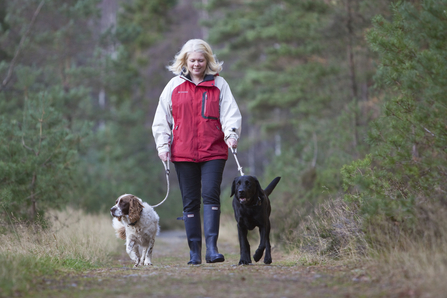
Peter Cairns 2020vision

Peter Cairns 2020vision
Leads are essential to prevent dogs harming ground-nesting birds, say The Wildlife Trusts.
As people explore our wonderful countryside, urban commons and nature reserves, the celebrated song of the skylark and bubbling call of curlew are evocative and welcome sounds of spring. Birds like these – whose numbers are in worrying decline – are busy making their fragile nests on the ground, tucked away safely in long grass.
However, all too often, an exuberant or inquisitive pooch, wandering or bounding through grass or heather, disturbs wildlife, scares adult birds off nests or tramples eggs. And vulnerable chicks can quickly perish if they are left alone for too long.
The Wildlife Trusts are calling on dog walkers to keep their dogs on short leads to help ground-nesting birds this spring and summer. Whether you’re visiting moorland, fields, urban parks or the beach, there can be birds nesting on the ground – or just above it – that can be hard to see and are at risk of trampling, disturbance, and harm.
When dogs wander off the path into the grassland or reedbeds closer to the water’s edge, they are unwittingly disturbing birds as they go.John Rattray, Head of Nature Recovery (South)Nottinghamshire Wildlife Trust
John Rattray, Head of Nature Recovery (South) with Nottinghamshire Wildlife Trust says. “Dogs off leads can be a real issue for nesting birds on our nature reserves, especially at sites where most of the grassland habitat is narrow strips alongside paths – such as at our much loved Attenborough Nature Reserve. When dogs wander off the path into the grassland or reedbeds closer to the water’s edge, they are unwittingly disturbing birds as they go.”
At this time of year, it’s especially important to remember that we can all play our part in helping birds breed successfully by keeping dogs on short leads in wild placesJames Brittain-McVey, lead guitaristThe Vamps
James Brittain-McVey, lead guitarist of The Vamps, dog owner and ambassador for The Wildlife Trusts says:
“I’ve learnt, as a rescue dog owner, the importance of keeping your dog under control at all times. And at this time of year, it’s especially important to remember that we can all play our part in helping birds breed successfully by keeping dogs on short leads in wild places – especially when so many species are having such a hard time.”
We’re asking dog walkers to be sensitive by keeping their pets on a short lead, sticking to paths, and properly disposing of dog pooJohn Rattray, Head of Nature Recovery (South)Nottinghamshire Wildlife Trust
John added: “Our nature reserves are for wildlife and people and many visitors want to bring their dogs. Many of our team, myself included, have dogs, so we understand the pleasure that a walk with your furry friend can bring, but allowing dogs to run loose on nature reserves can be devastating for wildlife, particularly in spring when species are breeding and vulnerable. We’re asking dog walkers to be sensitive by keeping their pets on a short lead, sticking to paths, and properly disposing of dog poo. Wildlife is already under enormous pressure – let's all keep dogs on leads so as not to make things worse.”
Many people think of birds’ nests as being high up in trees, but a surprising number nest on the ground or just above it, in low bushes. For example:
But it’s best to keep dogs on leads on all beaches and the wider countryside until chicks have fledged in September.
Keeping dogs on short leads will benefit other wildlife that can be harmed or disturbed by enthusiastic pooches – from snakes to seals and amphibians to mammals as well as livestock, often used to help manage fragile habitats.

Nottinghamshire Wildlife Trust’s lambing season has just started at the Idle Valley Nature Reserve near Retford and ewes, together with lambs born at the reserve, will soon be returning to Trust nature reserves across the county – another reason it’s wise to keep your dog on a lead. Like sister Trusts across the UK, Nottinghamshire Wildlife Trust has often experience dog attacks on its livestock, but disturbance of wildlife is less often reported – so its keen to get the message out early this year to dog owners. Dogs disturbed seals at Cumbria Wildlife Trust’s South Walney nature reserves earlier this year and there are fears that seal numbers are down as a result.
The law says that you must keep your dog on a lead no longer than 2 metres between 1st March and 31st July, when on any open access land to protect ground-nesting birds. The Trust is asking people to follow the same approach when visiting nature reserves – and preferably all year round. For safety, you should also always keep your dog on a lead around grazing animals, although it’s safer to let your dog off if you are chased by cows or horses.
Other benefits of keeping dogs on leads include:
For more information about dogs on nature reserves please head to our web page.